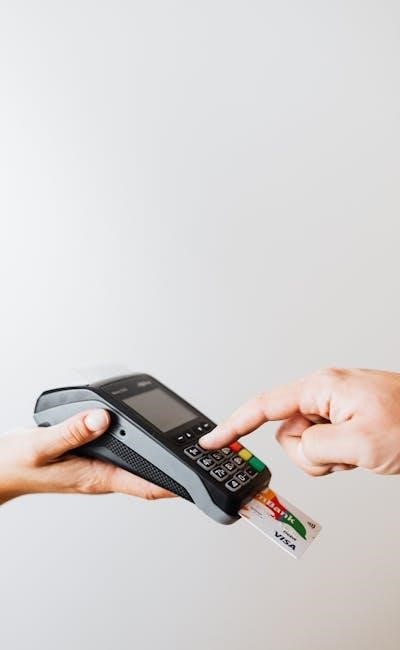
In today’s digital banking era, robust online security is paramount․ Traditional password-based login systems are increasingly vulnerable to phishing and data breach attempts․
Two-Factor Authentication (2FA) and its more advanced form, Multi-Factor Authentication (MFA), represent a critical layer of account protection, significantly enhancing financial security․
This overview details how 2FA/MFA strengthens banking security, explores available methods, and provides insights into maximizing secure access to your accounts, bolstering cybersecurity․
The Evolving Landscape of Online Banking Security
The realm of online banking security has undergone a dramatic transformation, driven by the escalating sophistication of cyber threats․ Initially, simple passwords served as the primary gatekeeper, but this proved woefully inadequate against increasingly prevalent phishing attacks, malware, and brute-force attempts․ The rise of fraud prevention demanded more robust measures, leading to the introduction of security questions – a slight improvement, yet still susceptible to social engineering․
The increasing frequency and severity of data breach incidents highlighted the critical need for layered protection․ This spurred the adoption of two-factor authentication (2FA), initially as an optional feature, but now increasingly mandated by financial institutions․ 2FA moved beyond “something you know” (the password) to “something you have” – typically a one-time password (OTP) delivered via SMS or a mobile app․
However, the limitations of SMS-based 2FA, particularly its vulnerability to SIM swapping attacks, prompted the evolution towards multi-factor authentication (MFA)․ MFA incorporates multiple independent verification methods, such as biometric authentication (fingerprint or facial recognition), authenticator app-generated codes, or even a physical security key․
Furthermore, risk-based authentication is gaining traction, analyzing user behavior and device characteristics to assess the risk associated with each login attempt․ This dynamic approach allows for stronger account security without unduly inconveniencing legitimate users․ The ongoing arms race between banks and cybercriminals necessitates continuous innovation in cybersecurity and account protection strategies, ensuring the ongoing financial security of customers engaging in digital banking․
Understanding Multi-Factor Authentication (MFA) Methods
Multi-Factor Authentication (MFA) builds upon two-factor authentication (2FA) by requiring more than two independent verification factors, significantly bolstering online security․ These factors fall into three primary categories: something you know (e․g․, password, PIN), something you have (e․g․, mobile app, security key), and something you are (biometric authentication)․
Common MFA methods include SMS-based one-time passwords (OTP), though these are increasingly discouraged due to SIM swapping vulnerability․ Authenticator apps, like Google Authenticator or Authy, generate time-based OTPs, offering enhanced security․ Push notifications to a trusted device, requiring user confirmation, provide a convenient MFA option․
Security keys, such as YubiKeys, are physical devices that plug into a computer or connect via NFC, providing a highly secure form of verification resistant to phishing․ Biometric authentication, utilizing fingerprint scanning or facial recognition, leverages unique biological traits for identity verification․
Risk-based authentication dynamically adjusts security requirements based on contextual factors like location, device, and transaction amount․ For low-risk activities, a simple password might suffice, while high-risk transactions trigger stronger MFA challenges․ The choice of MFA method often depends on the financial institution and the user’s preference, balancing account protection with convenience․ Implementing strong MFA is a cornerstone of robust banking security and fraud prevention, safeguarding financial security in the face of evolving cybersecurity threats and ensuring secure access to digital banking services․
The Benefits of 2FA/MFA for Financial Security
Implementing two-factor authentication (2FA) or multi-factor authentication (MFA) delivers substantial benefits for financial security in the realm of online banking․ The primary advantage is a dramatically reduced risk of unauthorized account access, even if a password is compromised through phishing, malware, or a data breach․
Even with a stolen password, attackers require access to a second factor – a mobile app, SMS code, security key, or biometric authentication – making successful login significantly more difficult․ This layered protection is crucial in preventing fraud prevention and mitigating potential financial losses․ MFA provides a critical defense against account takeover, safeguarding funds and personal information․
Beyond preventing direct financial theft, 2FA/MFA enhances account protection by providing an audit trail․ Most systems log verification attempts, allowing users to quickly identify and report suspicious activity․ This proactive approach aids in early detection of potential cybersecurity incidents․ Furthermore, many financial institutions offer insurance or liability waivers to customers who utilize 2FA/MFA, offering additional protection․
The peace of mind offered by knowing your online banking accounts are fortified with an extra layer of security is invaluable․ 2FA/MFA isn’t merely a technical safeguard; it’s a vital component of responsible digital banking practices, contributing to overall financial security and fostering trust in secure access to vital financial services․ It strengthens banking security and improves identity verification processes, reducing vulnerability to increasingly sophisticated threats and bolstering online security․
Best Practices for Secure Online Banking and Account Protection
Addressing Common Concerns and Potential Weaknesses
While two-factor authentication (2FA) and multi-factor authentication (MFA) significantly enhance online security, it’s crucial to acknowledge potential concerns and weaknesses․ A common worry is the inconvenience of an extra verification step during login․ However, many mobile app-based authenticator apps and biometric authentication options streamline this process․
Another concern revolves around reliance on SMS-based one-time passwords (OTP)․ Text message delivery can be unreliable, and SMS is susceptible to SIM swapping attacks, compromising account security․ Phishing attacks can also target 2FA codes, though this is less common with more secure methods․ Security keys offer a stronger alternative, resistant to phishing․
Furthermore, the vulnerability of 2FA/MFA systems depends on the implementation․ Weaknesses in the underlying digital banking platform or poorly secured mobile apps can still create opportunities for attackers․ Risk-based authentication, which analyzes login behavior, can mitigate some risks but isn’t foolproof․
It’s also important to note that 2FA/MFA doesn’t eliminate all threats․ It primarily protects against unauthorized access; it doesn’t prevent users from authorizing fraudulent transactions themselves․ Robust fraud prevention measures and vigilant monitoring of account activity remain essential․ Finally, losing access to your 2FA device or recovery methods requires a well-defined recovery process from your financial institution to restore secure access and maintain financial security․ Proper cybersecurity awareness and proactive protection are key․



A solid and informative piece. The article effectively highlights the constant arms race between banks and cybercriminals. The point about risk-based authentication being a growing trend is particularly insightful – it’s a logical next step in adapting security measures to individual user behavior. While the article is a good overview, it might benefit from briefly mentioning the potential drawbacks of MFA, such as user fatigue or accessibility issues for some users. However, overall, a very useful and timely explanation of a crucial aspect of modern banking.
This is a very well-written and concise overview of the evolution of online banking security. The article clearly explains the progression from simple passwords to the now-essential 2FA and MFA. I particularly appreciated the explanation of the vulnerabilities of SMS-based 2FA and the subsequent move towards more secure MFA methods like biometric authentication. It